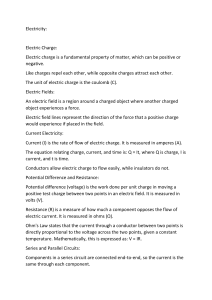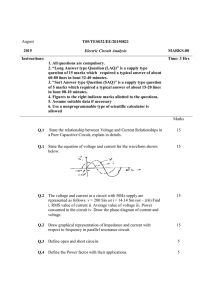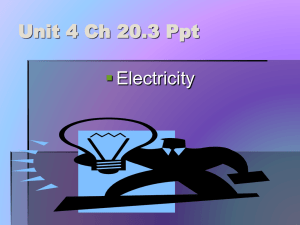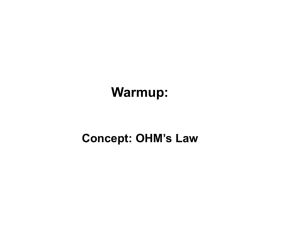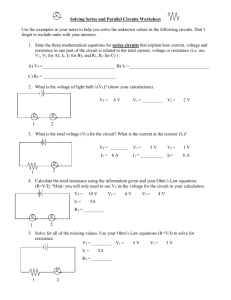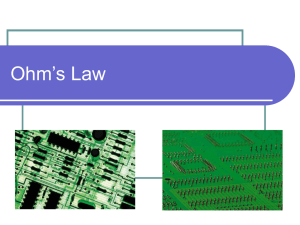Physics Unit Review Sheet: Static Electricity & Circuits
advertisement
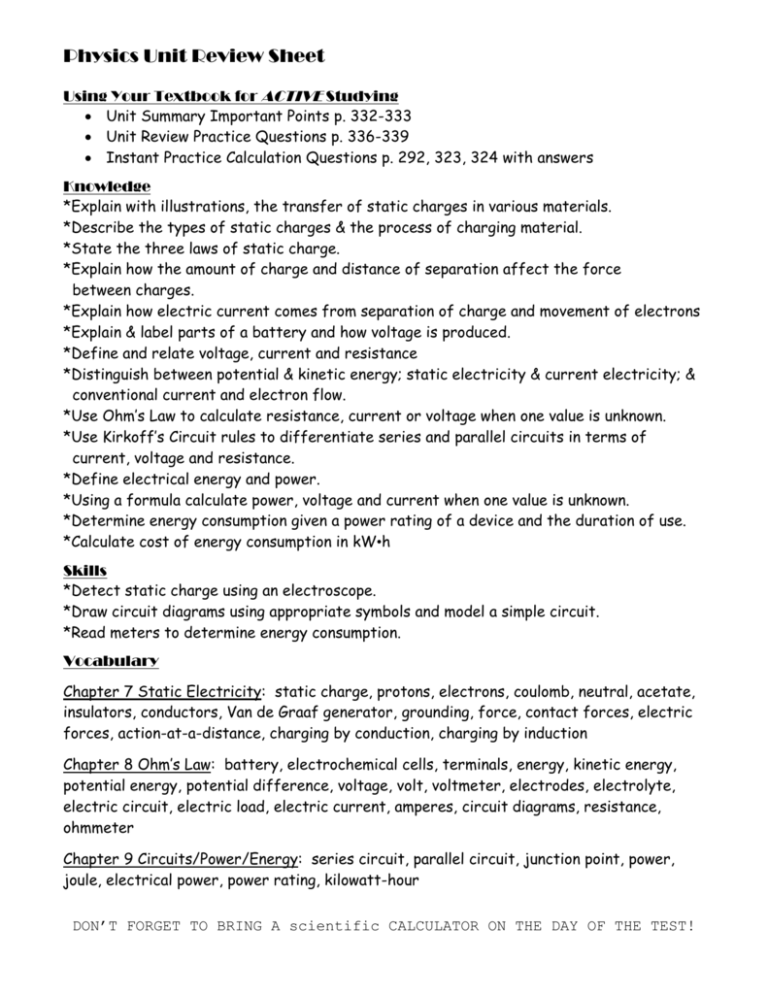
Physics Unit Review Sheet Using Your Textbook for ACTIVE Studying Unit Summary Important Points p. 332-333 Unit Review Practice Questions p. 336-339 Instant Practice Calculation Questions p. 292, 323, 324 with answers Knowledge *Explain with illustrations, the transfer of static charges in various materials. *Describe the types of static charges & the process of charging material. *State the three laws of static charge. *Explain how the amount of charge and distance of separation affect the force between charges. *Explain how electric current comes from separation of charge and movement of electrons *Explain & label parts of a battery and how voltage is produced. *Define and relate voltage, current and resistance *Distinguish between potential & kinetic energy; static electricity & current electricity; & conventional current and electron flow. *Use Ohm’s Law to calculate resistance, current or voltage when one value is unknown. *Use Kirkoff’s Circuit rules to differentiate series and parallel circuits in terms of current, voltage and resistance. *Define electrical energy and power. *Using a formula calculate power, voltage and current when one value is unknown. *Determine energy consumption given a power rating of a device and the duration of use. *Calculate cost of energy consumption in kW•h Skills *Detect static charge using an electroscope. *Draw circuit diagrams using appropriate symbols and model a simple circuit. *Read meters to determine energy consumption. Vocabulary Chapter 7 Static Electricity: static charge, protons, electrons, coulomb, neutral, acetate, insulators, conductors, Van de Graaf generator, grounding, force, contact forces, electric forces, action-at-a-distance, charging by conduction, charging by induction Chapter 8 Ohm’s Law: battery, electrochemical cells, terminals, energy, kinetic energy, potential energy, potential difference, voltage, volt, voltmeter, electrodes, electrolyte, electric circuit, electric load, electric current, amperes, circuit diagrams, resistance, ohmmeter Chapter 9 Circuits/Power/Energy: series circuit, parallel circuit, junction point, power, joule, electrical power, power rating, kilowatt-hour DON’T FORGET TO BRING A scientific CALCULATOR ON THE DAY OF THE TEST!
